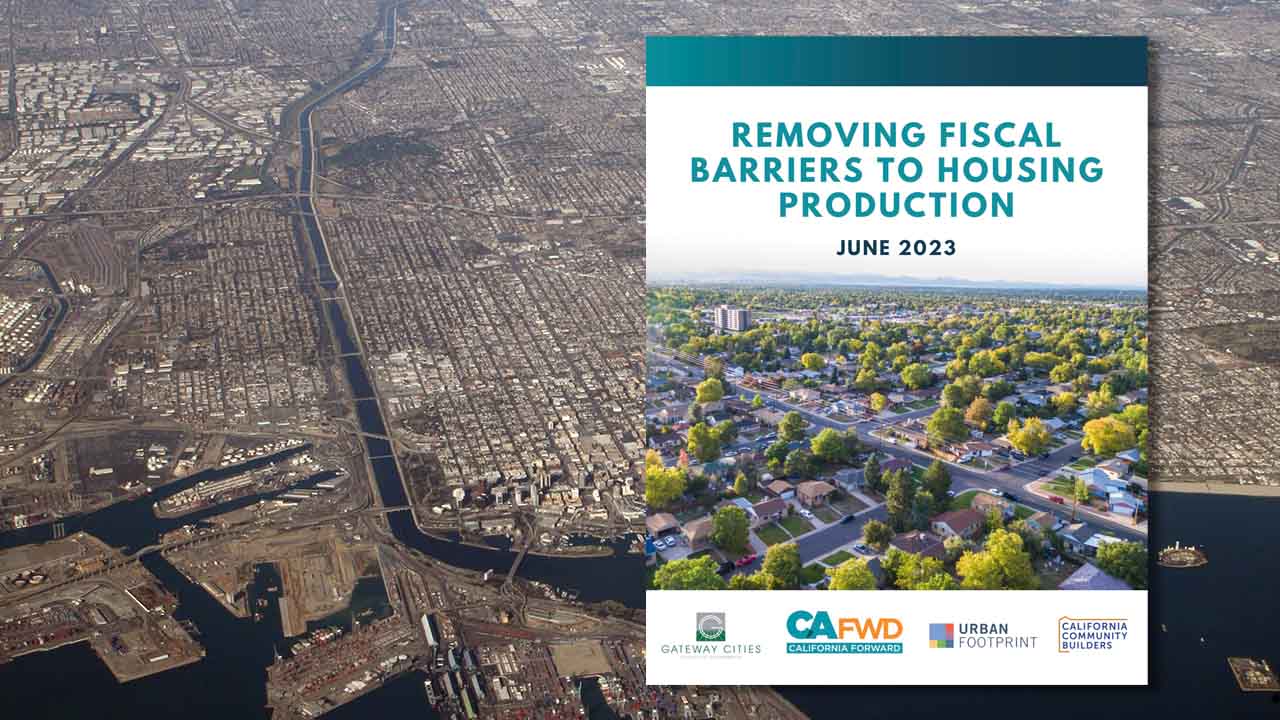
(Aerial Photo: Doc Searls/Flickr)
It’s no secret that California needs to build more homes to alleviate the state’s housing crisis. One region in Los Angeles County could benefit from new housing but building it could pose a negative fiscal impact on the region’s cities.
The southeast region of the County is filled with working-class, densely filled neighborhoods and cities, also known as the Gateway Cities. This region in South and Southeast L.A. County urgently needs more housing as costs continue to rise for this economically disadvantaged population leading to overcrowded conditions. In the wake of the COVID-19 pandemic, an increased amount of commercial property became economically available for redevelopment. In addition, new state laws streamline how new housing is approved on commercial land. But the State’s current property tax distribution to these cities makes building new housing a difficult choice for cities.
In a new report, “Removing Fiscal Barriers to Housing Production,” CA FWD, the Gateway Council of Governments and Urban Footprint studied the relationship between new housing production and property tax shares across the State. The study modeled the net fiscal impact of building housing on 19 commercial and industrial sites in the Gateway Cities and modeled the impact of the sixth Regional Housing Needs Assessment (RHNA), a state law that mandates cities to plan for new housing and projected growth. They found that 16 of the 19 sites would pose a net loss to the cities due to the increased cost of city services (many of these cities contract out services such as police, fire and waste removal). Add to that, the RHNA allocations and new state legislation that opens commercially zoned land for infill housing could result in decreased tax revenue as Gateway Cities seek retail to residential conversion opportunities.
It seems counterintuitive as new housing would bring in higher property tax revenue as homes would be sold at today’s market rates. But a legacy of Proposition 13 and AB 8, which set the initial allocation in 1978, gives the Gateway Cities very little to no share of the property tax in their service area. The property tax share to these cities is among the lowest in the State, ranging from nearly 0% to 17%. Meanwhile additional residents create additional costs for city services and converting commercial space can cause drops in sales tax revenue. This situation has resulted in much less new housing in the Gateway Cities than in the rest of Los Angeles County and California.
The study suggests that changes must be made to encourage Gateway Cities to build new housing, including revisiting the property tax allocated to cities set by Assembly Bill 8 in 1978. Reforms could include:
- Direct legislative reform of the property tax share of the 1% general levy,
- A swap of other tax revenue regionally or with the state, or
- A state grant or other subsidy to backfill the fiscal cost of housing development in low to no property tax allocation cities.
The full report can be read here.
You can also learn more in-depth about the study as CA FWD and the Gateway Cities Council of Governments (COG) and other experts and practitioners participate in a virtual discussion on removing fiscal barriers to housing production.
WEBINAR: Removing Fiscal Barriers to Housing Production
Tuesday June 27, 2023
12:30 p.m. – 2 p.m.
Register Here


